Painting and Existence:
Chinese, Japanese and Korean Abstract Painting Travelling Exhibition
Artists: Chen Wenji / Chi Qun / Ding Yi / Feng Lianghong / Ju Ting / Leng Guangmin / Li Kezheng / Liang Quan / Ma Shuqing / Ou Jin / Qian Jiahua / Qu Fengguo / Shang Yang / Shen Han / Shen Zhenglin / Tan Ping / Wang Yi / Wang Zhiyi / Xue Feng / Ye Zhou / Yu Youhan / Zhang Xuerui / Zhu Jinshi / Katsuyoshi Inokuma / Kim Deok Han / Mukai Shuji / Tsuyoshi Maekawa / Tetsuo Mizu / Yukihisa Isobe / Choi Myoung Young / Ha Chong Hyun / Kwon Young Woo / Lee Dong Youb / Lee Ufan / Yun Hyong Keun
10.31 - 12.12, 2020
Beijing 1st & 2nd Space
The traveling exhibition “Painting and Existence: Chinese, Japanese, and Korean Abstract Painting” began its journey in February 2019 at Tang Contemporary Art Hong Kong. The show traveled to Whitestone Gallery in Taipei in August 2019, and it will now close at both of Tang Contemporary Art’s Beijing spaces. As the conclusion to the show, this exhibition will present more than 70 abstract paintings by 35 Chinese, Japanese, and Korean artists, tracing the development of abstract painting from its beginnings with Gutai in Japan in the 1950s to Dansaekhwa in South Korea in the 1970s to its emergence in China in the late 1980s to the present.
The Gutai Art Association was founded by Jiro Yoshihara in 1954 and the group dissolved after his death in 1972. The principles behind Gutai were fully elaborated in “The Gutai Manifesto,” which stated: “Gutai Art does not alter matter. Gutai Art imparts life to matter. Gutai Art does not distort matter. In Gutai Art, the human spirit and matter shake hands with each other while keeping their distance.” Within this framework, Gutai members engaged in a range of aesthetic experiments. Tsuyoshi Maekawa and Shuji Mukai are important second-generation Gutai artists, who maintained their creative drive after the group disbanded. Tsuyoshi Maekawa employs the rough texture of burlap, to which he adds adhesive and oil paint; he has continued to use burlap as a distinctive medium throughout his entire creative career. Shuji Mukai builds spaces using oils, books, and even sections of canvas, covering all visible surfaces with hand-drawn designs. These experiments have given Gutai an important place in the history of contemporary art in Asia and it remains influential even today.
Dansaekhwa began in the 1970s and was part of the Korean art scene for more than a decade. The ideas of the movement have also appeared in the work of the younger generation of artists. Dansaekhwa and Gutai were important and influential movements in Asian modern and contemporary art history. Key Dansaekhwa artists include Ha Chong-Hyun, Kwon Young-Woo, Lee Ufan, and Yun Hyong-Keun. Dansaekhwa was characterized by the use of pure color, repeated applications of paint, and simple visual experiences. In the 1970s, artists used this style to express their material poverty and their desire to resist the military government. Influenced by ancient Korean scholar and calligrapher Gim Jeong-hui, Yun Hyong-Keun thinned paint with turpentine so that he could more easily apply washes to his canvases and create an effect similar to traditional ink and wash painting on xuan paper. Lee Ufan is one of the most important post-war Asian artists, serving as a leader for both Mono-ha and Dansaekhwa. After Mono-ha ended in 1972, he embarked upon explorations of brushwork, voids, and spaces for several decades. After Lee Ufan moved to Japan, he traveled often between South Korea and Japan, playing an important role in artistic exchange between the two countries.
Influenced by Western art, Chinese artists began to engage with abstract art in the 1980s. The majority of the ‘85 New Wave artists who started an abstract practice used abstract art to rebel against and subvert the art system and mainstream values. At that time, abstract painting was significant because it established a new set of values, a realist and political mode of abstraction. In the 1990s, artists began to develop abstract painting techniques with an individual style. The context for abstract painting had changed, giving rise to brushstroke abstraction, conceptual abstraction, and hard-edge abstraction. Artists experimented with mediums, textures, forms, and concepts, and they focused on the expression of everyday, personal experiences, exploring the relationship between personal methods and art historical contexts.
This exhibition begins with Chinese artists active in abstract art in the 1980s and 1990s, such as Shang Yang, Yu Youhan, Liang Quan, Zhu Jinshi, Chen Wenji, Ma Shuqing,Tan Ping, Ding Yi, Feng Lianghong, Ye zhou and Qu Fengguo. The show then continues with members of the younger generation, such as Xue Feng, Ou Jin, Zhang Xuerui, Chi Qun, Ju Ting, Li Kezheng, Leng Guangmin, Shen Zhenglin, Qian Jiahua, Shen Han, Wang Yi and Wang Zhiyi. The exhibition spans time and space to show the breadth of abstract painting and expand the boundaries of abstract art.
 Tetsuo MizuJPA Oil on canvas 72.5 × 60.5 cm 1997 | 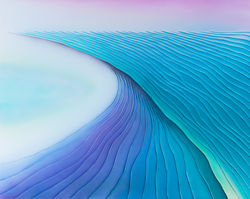 Tsuyoshi MaekawaUntitled 160433 Acrylic and sewing on cotton cloth 80 x 100 cm 2010 |  Katsuyoshi InokumaIN BLUE Aug '05 Acrylic and coffee powder on panel 192 x 192 cm 2005 |
|---|---|---|
 Kim Deok HanOverlaid Series. No.20-130-1 East Asian Lacquer on panel 150 x 150 x 6 cm 2020 |  MUKAI ShujiUntitled Acrylic on wood 117 x 80 x 10.5 cm 2017 |  Yukihisa IsobeWORK'65-9 Mix media 138.5 x 93.5 x 6 cm 1965 |
 Yun Hyong KeunUmber Blue Oil on linen 161.8 x 130.2 cm 1987 | 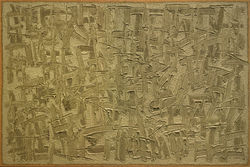 Ha Chong HyunConjunction Oil on hemp cloth 120 x 180 cm 2002 | 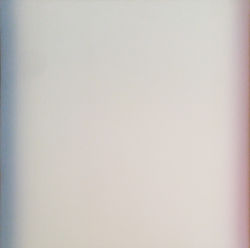 Lee Dong YoubInterspace/Meditation Acrylic on canvas 160 x 160 cm 2003 |
 Choi Myoung YoungConditional Plane Surface Oriental ink on Korean paper on canvas 146 x 82 cm 1985 |  Kwon Young WooUntitled Ink gouache on Korean paper mounted on canvas 116.5 x 89.5 cm 1980s |  Lee UfanFrom Winds Pigment and oil on canvas 60 x 72 cm 1986-7 |
 Leng GuangminKilling Time Acrylic on canvas 100 x 120 cm 2020 |  Shen ZhenglinLUCY No.1 Oil on canvas 200 x 200 cm 2014-2015 |  Qian JiahuaTruck Acrylic on canvas 200 x 160 cm 2020 |
 Shen HanPetrushka Oil and charcoal on canvas 190 × 150 cm × 3, Triptych 2019 |  Wang ZhiyiGestalt Space Acrylic on canvas 300 x 200 cm 2013-2014 | 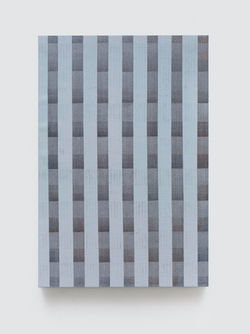 Chi QunSeven Lines-Light Grey Oil on Canvas 200 x 135 cm 2016 |
 Wang YiHub 2018-2 Acrylic on canvas 220 x 220 cm 2018 |  Ou JinUntitled-175 Acrylic, wood, mix media 30 x 30 cm 2020 |  Yu Youhan2019-5-4 Acrylic on canvas 157 x 208cm 2019 |
 Shang YangDecayed Landscape No.3 Mixed media on canvas 168 x 777 cm 2018 | 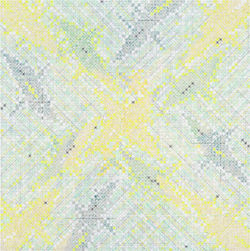 Ding YiAppearance of Crosses 2019-01 Mixed media on basswood 240 x 240 cm 2019 | 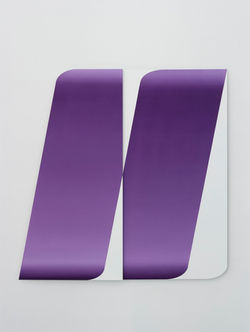 Chen WenjiOverlapped/Dual Series (Purple) Oil on aluminum panel 140 x 140 cm |
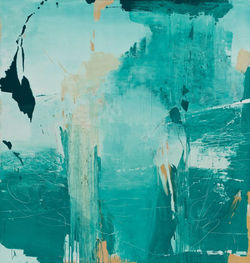 Feng LianghongGreen 12-6 Oil on canvas 200 x 190 cm 2012 |  Xue FengSubmerge 9 Acrylic and Oil on canvas 180 x 150 cm 2013 |  Ma ShuqingRemembrance of Provence No.2 Oil on canvas 200 x 200 cm 2008-2018 |
 Zhang Xuerui225 202002 Acrylic on canvas 150 x 150 cm 2020 |  Ju TingUntitled 071618 Acrylic on wood 195 x 235 x 13 cm 2018 |  Tan PingUntitled Acrylic on canvas 200 x 300 cm 2017 |
 Liang QuanOur Tea Tea, color, ink, acrylic and rice paper on linen collage 115 x 51 cm 2017 |  Qu FengguoSummer Solstice Oil on canvas 150 x 240 cm 2020 |  Li KezhengThe Thinking of Vision-Pale Yellow Acrylic on canvas 180 x 260 cm 2017 |
 Ye ZhouTime 201806 Acrylic on canvas 200 x 160 cm x 2, Diptych 2018 |  Zhu JinshiBeef Soup Temple No.2 180 x 160 cm 2017 |
Artists

Lee Ufan
b. 1936, South Korea
Lee Ufan is a painter, sculptor, and philosopher. He is a major proponent of the Avant-Garde artistic movement called Mono-ha (School of Things) with Nobuo Sekine in the late 1960s. This artistic movement focuses on the relationships of materials and perceptions rather than on expression or intervention. After he moved to Japan in 1956, Lee traveled extensively between the two countries and served as a vital conduit between what was happening in both places and helped to introduce Dansaekhwa to a wider audience abroad. Lee’s art process and materials consist of unconventional ideas and anti-authoritarian concepts. His series From Line and From Point, begun in the early 1970s, connected him to many of the ideas in Dansaekhwa. Lee explored themes of gesture and the connection between mark making and the medium of paint itself. This interest was grounded in the tradition of calligraphy, which involved a discipline of repeatedly drawing single lines, and frames the artist's profound investigation of the act of painting.
Lee’s work has been featured in hundreds of solo and group exhibitions since 1967 including Pompidou Metz, Metz, France (2019); Serpentine Galleries, London, UK (2018); Couvent de la Tourette, Eveux, France (2017); Centre de Création Contemporaine Olivier Debré, Tours, France (2017); Château La Coste, Le Puy-Sainte-Réparade, France (2016); Palace of Versailles, Versailles, France (2014); Guggenheim Museum, New York, NY, USA (2011); the Yokohama Museum of Art, Yokohama, Japan (2005); the Samsung Museum of Modern Art, Seoul, South Korea (2003); Kunstmuseum Bonn, Germany (2001); the Galerie Nationale du Jeu de Paume, Paris, France (1997); and the National Museum of Contemporary Art, Seoul, South Korea (1994). He was awarded the Praemium Imperiale for painting in 2001 and the UNESCO Prize in 2000. In 2010 the Lee Ufan Museum, designed by Tadao Ando, opened at Benesse Art Site, Naoshima, Japan.

Tsuyoshi Maekawa
b. 1936 in Osaka
Tsuyoshi Maekawa studied design at Osaka City Kogei High School. He took Jiro Yoshihara, a leader of Gutai Art Association, as his mentor and he first presented his work in the eighth Gutai exhibition. He became a member of the Gutai group in 1962 till the group's demolition in 1972.
The first generation of Gutai made works that have been described as similar to action painting or performance art. As second generation of Gutai member, Maekawa’s early work is similarly reminiscent of Abstract Expressionism but his real preoccupation is with the material nature of the works, their object-ness. Rather than an investigation of action or emotion, he was focused on discovering new structural and material possibilities within imagery.
In the beginning of the 1960's, Maekawa made several works using burlap, a woven cloth created from hemp fibers with a coarse large weave that was usually used for bags of grain. Using burlap’s rough and organic surface, Maekawa applied a glue and oil paint to create works that have raw materiality, yet maintaining the elements of a painting. The relief-like surface’s gracefully meandering lines repeat organically, reminiscent of the rhythm of the natural world, geological structures of the earth, that go beyond the realm of the abstract and touch the viewer`s heart. Toward the 90s and 2000, Maekawa started to use more colors with acrylic paintings, adding colorful visual images while keeping the rough materiality of burlap, and intriguing the sense of touch and colorfulness.

Shang Yang
b.1942 in Hubei, China.
Having studied Soviet realism while at the Hubei Institute of Fine Arts, Shang Yang’s graduation work Boatmen on the Yellow River won universal acclaim from the official art establishment. However, he quickly abandoned the Soviet oil painting he learned at the academy and turned to mixed media. Two major series, the Great Landscapes and the ongoing Dong Qichang Project, simultaneously reveal his veneration for the tradition of Chinese landscape painting and his despair at the state of the environment in the twenty-first century. According to the artist: “For years I have been using ‘grand landscapes’ to express my concern about the relationship between humans and our environment and about our future survival as a species… the different expressive styles of the artists of the middle ages [agree] on this single subject—nature at one with humans.
Now they no longer exist and have been replaced by a fake nature.” (Shang Yang’s Views on Art). One of the most important episodes in Shang Yang’s formative years was his experimentation with different materials in 1988-89, a practice that has re-emerged in his work since 2000, and one that he continues to explore stylistically. Shang Yang’s works of 2016 are his most abstract to date, developing an approach that first appeared in his exhibition at the Suzhou Museum of Art in 2013.

Yu Youhan
b.1943 in Shanghai, China.
Yu Youhan graduated from the Central Academy of Art and Design, Beijing in 1973. Now he resides and works in Shanghai. Yu represented China at the 22nd São Paulo Biennale, Brazil (1994), the 45th Venice Biennale, Italy (1993) and the 1st Asia Pacific Triennial of Contemporary Art, Brisbane, Australia (1991).
His works have been presented in numerous prestigious venues worldwide, including Shanghai Beat - The Dynamism of Contemporary Art Scene in Shanghai, Contemporary Art Museum, Kumamoto, Japan (2018); Art and China after 1989: Theater of the World, Solomon R. Guggenheim Museum, New York, U.S.A. (2017); Yu Youhan: The Representational and The Abstract, ShanghART Shanghai (2017); Yu Youhan Retrospective, PSA China Contemporary Art Collection Series, Power Station of Art, Shanghai (2016); YU YOUHAN 1973-1988, Long Museum (West Bund), Shanghai (2016); YU Youhan: Yībān, Yuan Space, Beijing (2013); Yu Youhan's Paintings, ShanghART H-Space, Shanghai (2011); Out of Shanghai, Museum gegenstandsfreier Kunst, Otterndorf, Germany (2009); Writing on the Wall: Chinese New Realism and Avant-Garde in the Eighties and Nineties, Groninger Museum, The Netherlands (2008); Yu Youhan: Landscape of Yi Meng Shan, ShanghART H-Space, Shanghai (2004); Chine, le corps partout? (China, the body everywhere?), Museum of Contemporary Art, Marseilles,France (2004); Ah! Us, ShanghART Fuxing Park, Shanghai (1999); China/Avant-Garde Art Exhibition, National Art Museum of China, Beijing (1989) etc.

Liang Quan
b.1948 in Zhongshan, China.
Liang Quan grew up in Shanghai, and currently lives and works in Shenzhen.
Liang Quan's recent solo exhibitions include, "The Neo Six Persimmons", Hunsand Space; "Watching the Clouds Go By: Liang Quan's Creative Style and its Changes", Hive Center for Contemporary Art (Shenzhen); "Amassing the Essence: Thirty Years of Painting by Liang Quan", Hive Center for Contemporary Art. His works have been widely acquired by art museums and institutions abroad and at home including, National Art Museum of China, Shanghai Art Museum, Zhejiang Art Museum, Guangdong Art Museum, The British Museum, M+ Museum, Hong Kong, LV Foundation, Neue National Gallery in Berlin, Germany, etc.

Zhu Jinshi
b.1954, Beijing, China
Zhu Jinshi produces abstract paintings whose surfaces are built up with thick, near- sculptural layers of oil paint. Resembling colorful landscapes, Zhu’s images range in palette and scale, but the artist is known to always apply his oil paint with spatulas and shovels. Producing dense lashings of color, the artist’s method recalls the style and techniques espoused by the German Expressionists, who Zhu was profoundly influenced by during his years living in Berlin. Zhu belonged to a group of Chinese avant-garde artists named the Stars, which formed in 1979 to challenge aesthetic conventions and exhibit their work publicly.
Zhu Jinshi is a pioneer of Chinese abstract art and installation art. At present, he lives and works in Beijing. Zhu’s major solo exhibitions include “Wood · Character” (2020), Fusion Art Center, Beijing, China; The Ship of Time / Rejecting River Currents (2018), Tang Contemporary Art, Beijing, China; Zhu Jinshi (2016), Yuan Art Museum, Beijing, China; Performance in Paint: Zhu Jinshi (2015), Inside-Out Art Museum, Beijing, China. His major group shows include “TRILOGY OF CONTEMPORARY ART IN CHINA: The Scar” (2020- 2021), Busan Museum of Art, Busan, Korea; “AND NOW. The second decade of the White Rabbit Collection” (2020-2021), White Rabbit Gallery, Sydney; “Ways of Working: Artists’ Time, Space and Body” (2020), One Art Museum, Beijing; The Allure of Matter: Material Art from China (2019), Los Angeles County Museum of Art, Los Angeles, USA;Abstract and Beyond—The Research Exhibition of Abstract Art in China (2016), Minsheng Art Museum, Shanghai, China; 28 Chinese (2013), The Rubell Family Collection, Miami, USA; The 5th Shanghai Biennale: Hyper Design (2006), Shanghai Art Museum, Shanghai, China; Orient/Ation, 4th International Istanbul Biennial in Turkey (1995), Istanbul, Turkey; Chinese Avant-Garde Art (1993), Palace of World Culture, Berlin, Germany; The 2nd Xing Xing (Stars Group) Exhibition (1980), National Art Museum of China, Beijing, China.

Chen Wenji
b.1954 in Shanghai, China.
1978 Graduated from Printmaking Department of CAFA, served as Assistant Professor at Printmaking Department of CAFA, Lecturer at Folk Art Department, Professor at Mural Department, Chief of Basic Teaching and Research Section of CAFA, Executive Council at Oil Painting Association. CAFA hosted Chen Wenji solo exhibition as the inaugural exhibition of CAFA Art Museum.
After graduating from the Central Academy of Fine Arts, Chen Wenji's creation did not follow the "85 Art Trend" suit. He voluntarily chose an alienated approach to paint. Therefore, we will find a calm temperament in a series of oil paintings dated from the late 1980s to the early 1990s, such as "yellow couch", "pink paper", "red scarf", etc. However, these accessible works do not seem to match Chen's idea of being "more authentic'——the delicate, autistic and melancholy kind of expression. In the mid-1990s, a large number of still lifes appeared in Chen Wenji's works, such as cardboard boxes, cups, fluorescent tubes, etc., under the influence of Spanish artist Antonio Lopez Garcia. During this period, his iconic work "Red Scarf" was born. In 1995, Chen Wenji set up his studio in Yanjiao, an hour drive from Beijing. At the end of the 1990s, Chen Wenji's creative perspective broadened and more descriptions of the exterior scene appeared. The likes of "Supreme Series", "Vision", "Keeping Light" came into being.
Since 2006, Chen Wenji's creative thinking has undergone further changes. He began to describe simple forms and conceptual objects in a rigorous and detailed manner. These new works are an in-between creature of the plane and stereoscopic. At first glance, they strike one with Anish Kapoor's simplicity. However, through his superb painting techniques, the texture on canvas present a smooth tangible surface like a 3D sculpture. At this time, as Chen Wenji said, his creation is closer to childhood nature than he ever was.

Tan Ping
b.1960 in Chengde, China.
Tan Ping currently lives and works in Beijing. His work spans painting, printmaking, multi-media, installation, and design. He graduated from the Central Academy of Fine Arts in 1984. He began experimenting with a formalist abstract aesthetic in the late 1980s, creating highly textured copperplate prints. In 1994, he received a master’s degree and Meisterschule certification from the Berlin University of the Arts. After this training in abstract art in the Western academic system, Tan Ping finally moved from realism and expressionism to abstraction. As a result of these unique experiences, he became mainland China’s first abstract artist to come from a Western art academy.

DING YI
b.1962 in Shanghai, China.
Ding Yi graduated from Shanghai Arts & Crafts Institute in 1983 and graduated from Shanghai University with B.F.A. in 1990. The practice of Ding Yi encompasses painting, sculpture, spatial installation and architecture. He works primarily with “+” and its variant “x” as formal visual signals, above and against the political and social allegories typical of painting in China. He chose this sign in the second half of the 80s as a synonym of structure, rationality and of a pictorial expressiveness that reflects the essence of things.
The simplicity of compositional structure contrasts with the use of a wide variety of materials and of colors that range from almost monochrome tones to the very bright and fluorescent. For the artist these are a record on canvas of the excesses, noise, chaos and confusion but also the stimuli and styles of the city of Shanghai, with which his work is inextricably bound up.



